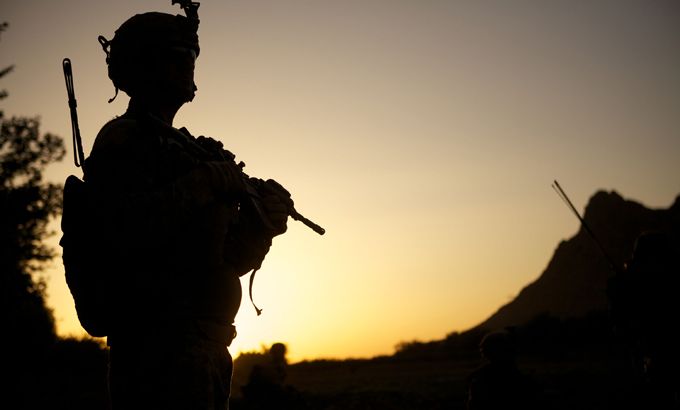
Endgame?
Will the US withdrawal from Afghanistan threaten hard-won gains in the battle against the Taliban?
In the coming weeks, Barack Obama, the US president, is set to decide on the size, scale and timing of an American withdrawal from Afghanistan. Last week the president’s military advisors reportedly argued against the prospect of a substantial withdrawal, saying that leaving too early would threaten hard-won gains.
The president’s final decision will depend on judgements made about the effectiveness of a surge in US troop numbers which began last year. The White House hoped then that the additional soldiers would suppress the Taliban enough to allow an orderly handover to Afghan national forces. So, has the surge worked?
Filmmaker John D McHugh was embedded with units from the US 4th infantry division in the city of Kandahar and the surrounding region, a part of Afghanistan that has seen some of the worst violence in the 10-year war. In the following account, he describes the progress he witnessed while he was in Afghanistan.
When I first visited Afghanistan, back in the spring of 2006, I started off in Kandahar. I was to be embedded with the military, as I have so often been since, but first I wanted to get a feeling for the place where I was to work. So, I got the name of a reliable taxi driver, a poorly fitting set of shalwar kameez, and set off from the army base at the airport into Kandahar city.
My driver had told me not to bring any cameras, as they would draw attention, so this was purely a fact finding mission. In my local clothes, with pakool hat drawn low, and a scarf pulled up to my bushy beard, I still looked incredibly Irish, and was unlikely to pass any but the most cursory of glances. It was not the smartest thing I have ever done, as I learned little except that Kandahar was a dangerous city, and not the place for a Western journalist to be travelling alone.
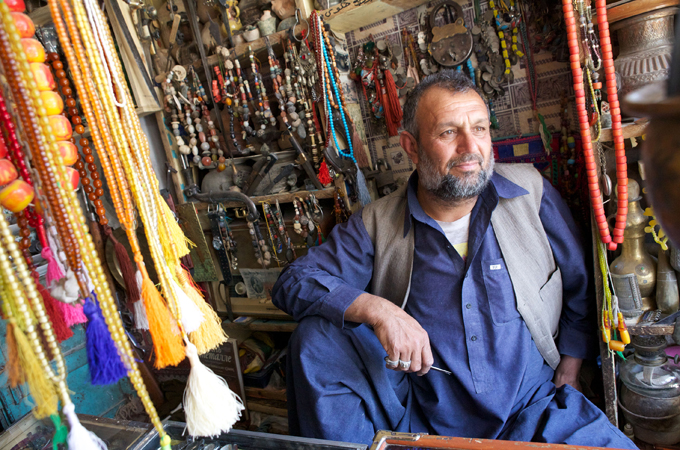 |
| As part of the counter-insurgency strategy US troops engage with people on the street [John D McHugh] |
I have worked extensively in Afghanistan since then, returning year after year, and have seen little progress in that time.
Imagine my surprise then, when on my latest trip in April/ May 2011, I found myself walking through the Old City Bazaar in Kandahar, chatting to street sellers, and drinking chai with shopkeepers. Yes, I was with a joint US/Afghan army and police patrol, but even so, this was unlike anything I had experienced before.
Instead of pushing people back, letting concern with suicide bombers override the need to engage with people, these soldiers and police were actively chatting and interacting with the people of Kandahar.
It is part of the now well-established counter-insurgency strategy, also known as COIN.
The very fact that the Americans felt safe enough to walk rather than drive their heavy armoured vehicles convinced me that there is very real progress being made in this part of Afghanistan.
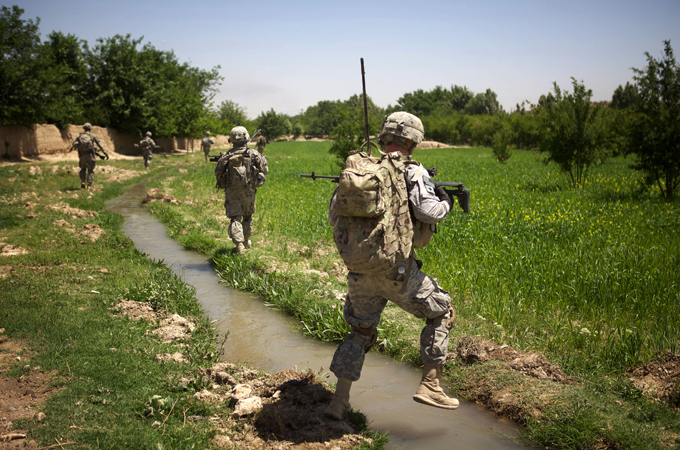 |
| The troops spend a lot of their time on patrol, mainly through the pomegranate orchards [John D McHugh] |
A few days later I was walking through the famed pomegranate orchards on the west of the city, just a mile north of Saraposa prison.
The soldiers were searching for Taliban weapons and explosives, which they had been finding and destroying all winter.
They told me that the local people were now giving them more information about hidden weapon caches, and also about Taliban movement in the area.
The soldiers I was with took a great amount of pride in the relationships they had built with the people in their area, and there was definitely a much better level of interaction than I have seen before in Afghanistan.
However, a week later almost 500 prisoners escaped from Saraposa prison, through a tunnel that had purportedly taken three months to dig. No one had told the Americans about it.
The ‘edge of the world’
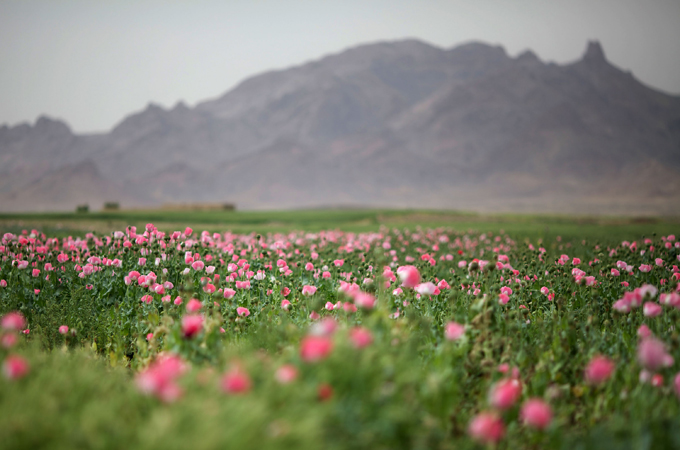 |
| Arghandab valley is said to be the spiritual heartland of the Taliban [John D McHugh] |
Next I travelled out to the Arghandab valley. This is a remote place, spiritual heartland of the Taliban, and long considered a safe haven for them. The soldiers out there described it as the “edge of the world”.
The base I was at, Combat Outpost TJ (COP TJ), was only four months old. The soldiers had air assaulted in by helicopter in January, and once they had cleared the hilltop of improvised explosive devices, also known as IEDs, they started to build.
Their commander, Lieutenant Brien, told me that they were as focused on building relationships with their neighbours as they were on building their base.
Again, this is part of the COIN strategy. “Separate the people from the insurgents” is the mantra, and once you know your neighbours, what they look like, where they live, what they work at, then the theory is that the Taliban fighters will stand out from the normal “pattern of life”.
It was astonishing to see the level to which the soldiers of 1st Platoon had taken this strategy. As I walked through one of the three villages that lay in the shadow of their Combat Outpost, Brien described in detail the census of the people that he had carried out, and how that demographical information was helping them find and capture Taliban fighters.
He was also refreshingly pragmatic about the situation on the ground. He told me that when he arrived he was given a list of people that were considered “Taliban facilitators,” people who provided safe houses and support. But, he said, these people were not really facilitators at all, just influential people, village elders and landowners, who had no choice but to cooperate with the Taliban when they controlled the area. Now, he said, “they are working with us instead”.
‘Taliban Tet Offensive’
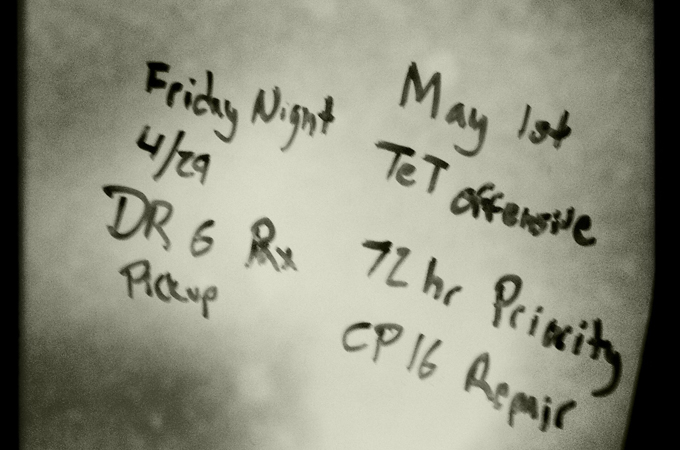 |
| Preparing for a Taliban offensive [John D McHugh] |
However, despite the progress I had seen, I was not quite ready to believe that the war was over. And so, when a call came in over the radio that a coordinated Taliban offensive was expected in the next 72 hours, I was not that surprised.
Described as a “Taliban Tet Offensive,” it was expected to be several simultaneous attacks on remote outposts. COP TJ was a high-risk target, and so the soldiers redoubled their efforts to improve their defences.
There followed three frantic days of building new walls, hammering posts, and laying barbed and razor wire. The offensive, however, never materialised.
One of the biggest gripes the soldiers had was the Taliban’s repeated statements about these types of offensives and that would then be endlessly reported by Western media outlets. The fact was, said the troops, there was very little violence. And if the Taliban did carry out attacks, they were usually of the “spectacular” variety, designed, the soldiers said, to garner headlines rather than achieve any strategic aims.
And this did seem to be borne out a few days later, when there were several simultaneous attacks against key government buildings in Kandahar city. The attacks certainly grabbed the headlines, but the end result was 25 dead Taliban versus two Afghan security forces and one civilian killed. No compounds were breached, and the attack was essentially ineffective.
Endgame in Afghanistan?
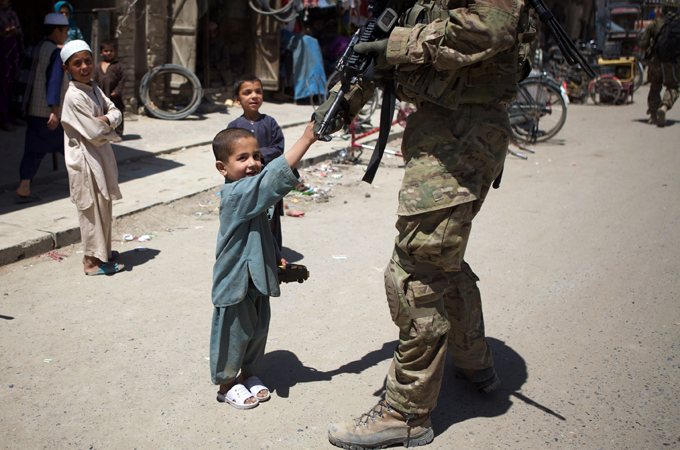 |
| Soldiers are actively chatting and interacting with the people of Kandahar [John D McHugh] |
In my almost five weeks in Kandahar, I did not hear a shot fired in anger, or witness any IEDs, airstrikes, or anything really. It was by far the quietest trip I have made to Afghanistan.
There is still violence however, and soldiers and civilians continue to lose their lives, but not in the numbers that would be expected if the “Fighting Season” was truly underway.
Of course, with an extra 30,000 US troops in the area, not to mention all the extra Afghan soldiers and police, it is entirely understandable why the Taliban would choose to issue sensational but ultimately untrue statements about their willingness and ability to fight, rather than actually fighting.
So, is this the endgame in Afghanistan? Obama’s closest advisors are still in the dark as to what will be announced in July, the date the president set for the beginning of a troop drawdown in Afghanistan.
There is no doubt that he is being lobbied hard, by two opposing camps. The first, keen for an election win next year, and citing the death of Osama bin Laden as the achievement of the main goal in the Afghan war, want to announce big withdrawals as soon as possible. The other camp, made up of Robert Gates, the US secretary of defence, and senior military leaders, argue that to start leaving too soon would undermine all that has been achieved through “the surge”. They want to keep up the pressure, saying the Taliban is almost beaten.
So, what is the truth? Well, I am going to go out on a limb, and say that I have seen progress in Kandahar. And progress in Afghanistan, however slight or tenuous, is not something I ever expected to be able to report. But I cannot help wondering, what happens once the Americans are gone? Are the Afghan security forces likely to be able to hold the ground against the Taliban on their own? Only time will tell.